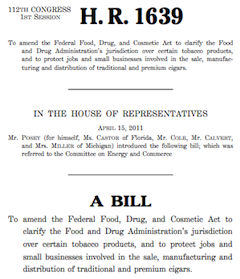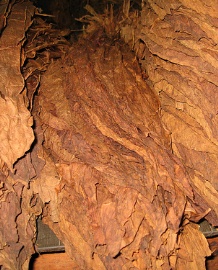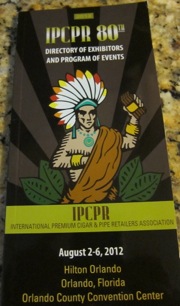Commentary: Random Thoughts from the Humidor (X)
6 Sep 2012
In this segment of Random Thoughts from the Humidor, I pontificate on the upcoming football season, Lance Armstrong, and observe the latest from Puro PAC.
Football and Cigars
Baseball is still my favorite sport to watch with a cigar (the pace of the game and the long season is perfect for relaxing with a cigar), but football is a close second. Finding a cigar shop with your game on television is a goldmine, while watching the Sunday night game (which streams for free online) isn’t bad either on a crisp fall night on my balcony. My favorite Super Bowl viewing experience was at Shelly’s Backroom, although that had more to do with the fact that my Giants beat the undefeated Patriots that year.
Lance the Dope(r)
Following years of allegations that Lance Armstrong cheated his way to his historic victories in the Tour de France, the U.S. Anti-Doping Association has stripped him of all seven of his Tour de France titles. Lance claims the government agency lacks the power to do this and claims it is all a political attack against him, but has dropped all his legal challenges to the agency’s actions. Meanwhile, Armstrong continues to push for the government to control the lives of adults who choose to use tobacco and relentlessly attacks those who oppose his efforts. Does he see the irony (or hypocrisy) of complaining when the government supposedly overreaches against him for putting a foreign substance in his body, while at the same time pushing the government to interfere even more into the lives of millions of others who choose a different (and legal) substance? I doubt it.
Puro PAC Supports Cigar Bill Co-Sponsors (And Some Who Aren’t)
Puro PAC, the “Super PAC” created to fight for Cigar Rights in Washington, has been busy raising money and supporting candidates (so far the PAC hasn’t reported any independent expenditures). According to the most recent reports, all of the money is going to incumbents (though recipient Shelly Berkley (D-NV), a cosponsor of H.R. 1639, is currently challenging Republican Dean Heller for his Senate seat). Roughly two-thirds of the money has gone to Republicans. Of the 46 recipients of Puro PAC contributions, all but seven are co-sponsors of either the Senate or House versions of the Traditional Cigar Manufacturing and Small Business Preservation Act. Those who aren’t include Speaker John Boehner, Senate Minority Leader Mitch McConnell, Senator Robert Menendez of New Jersey (who apparently raises money at cigar events but also voted for FDA regulation of tobacco to begin with and led the charge to raise the SCHIP tax), and non-cosponsoring Representatives Leonard Boswell (D-IA), Yvette Clarke (D-NY), and noted cigar smoker Gerry Connolly (D-VA).
photo credit: Stogie Guys

 This hit home for me the other day when I was smoking at a local shop. I’d walked back to the counter to use a lighter to correct an errant burn.
This hit home for me the other day when I was smoking at a local shop. I’d walked back to the counter to use a lighter to correct an errant burn. I’m concerned because I think many cigar smokers believe there’s nothing left to do on this legislation to bar the Food & Drug Administration from regulating premium cigars. I’ve heard more than once that it’s achieved a majority in Congress, the implication being that we’ve won the fight.
I’m concerned because I think many cigar smokers believe there’s nothing left to do on this legislation to bar the Food & Drug Administration from regulating premium cigars. I’ve heard more than once that it’s achieved a majority in Congress, the implication being that we’ve won the fight. Invariably, I find something of note. It may be a stunning photograph in Birds & Blooms, a fascinating tale of accomplishment in This Old House, or a thought-provoking review in Stereophile.
Invariably, I find something of note. It may be a stunning photograph in Birds & Blooms, a fascinating tale of accomplishment in This Old House, or a thought-provoking review in Stereophile. I’m certainly guilty of using the word in an admittedly vague way, particularly when it comes to the reviews I write. I often mention texture when I’m describing the smoking characteristics of the particular cigar I’m examining. Usually right after the flavor, which I personally consider to be a completely different characteristic.
I’m certainly guilty of using the word in an admittedly vague way, particularly when it comes to the reviews I write. I often mention texture when I’m describing the smoking characteristics of the particular cigar I’m examining. Usually right after the flavor, which I personally consider to be a completely different characteristic. When we visited Drew Estate in May, Jonathan Drew called Ecuador the “Land of Milk and Money.” Given the number of Ecuadorian wrappers at this year’s Trade Show, it would be hard to argue. It seemed like every other new release featured an Ecuador-grown wrapper.
When we visited Drew Estate in May, Jonathan Drew called Ecuador the “Land of Milk and Money.” Given the number of Ecuadorian wrappers at this year’s Trade Show, it would be hard to argue. It seemed like every other new release featured an Ecuador-grown wrapper. While I didn’t personally attend the event this year (Patrick S and George E did), I can clearly recall the experience of my first IPCPR Trade Show in New Orleans. It was as overwhelming as it was fun. Away from the show, where it’s easy to keep your cigar selection focused on what’s available at your local shop, you can lose sight of just how huge the cigar industry has grown. But walking the convention floor, seeing booth after booth of new products, you find yourself wondering, “How will I ever find the time to try all of these new cigars?â€
While I didn’t personally attend the event this year (Patrick S and George E did), I can clearly recall the experience of my first IPCPR Trade Show in New Orleans. It was as overwhelming as it was fun. Away from the show, where it’s easy to keep your cigar selection focused on what’s available at your local shop, you can lose sight of just how huge the cigar industry has grown. But walking the convention floor, seeing booth after booth of new products, you find yourself wondering, “How will I ever find the time to try all of these new cigars?â€ Patrick Ashby
Co-Founder & Editor in Chief
Patrick Ashby
Co-Founder & Editor in Chief Patrick Semmens
Co-Founder & Publisher
Patrick Semmens
Co-Founder & Publisher George Edmonson
Tampa Bureau Chief
George Edmonson
Tampa Bureau Chief